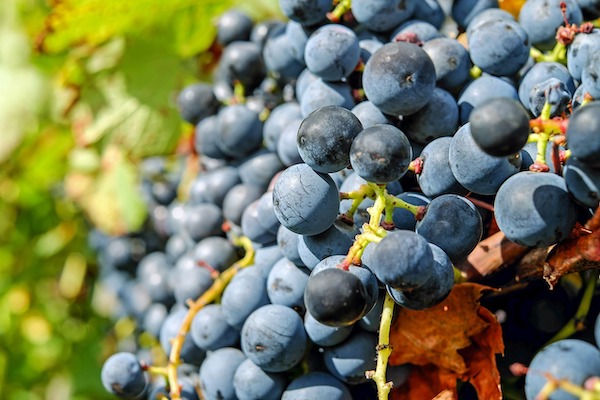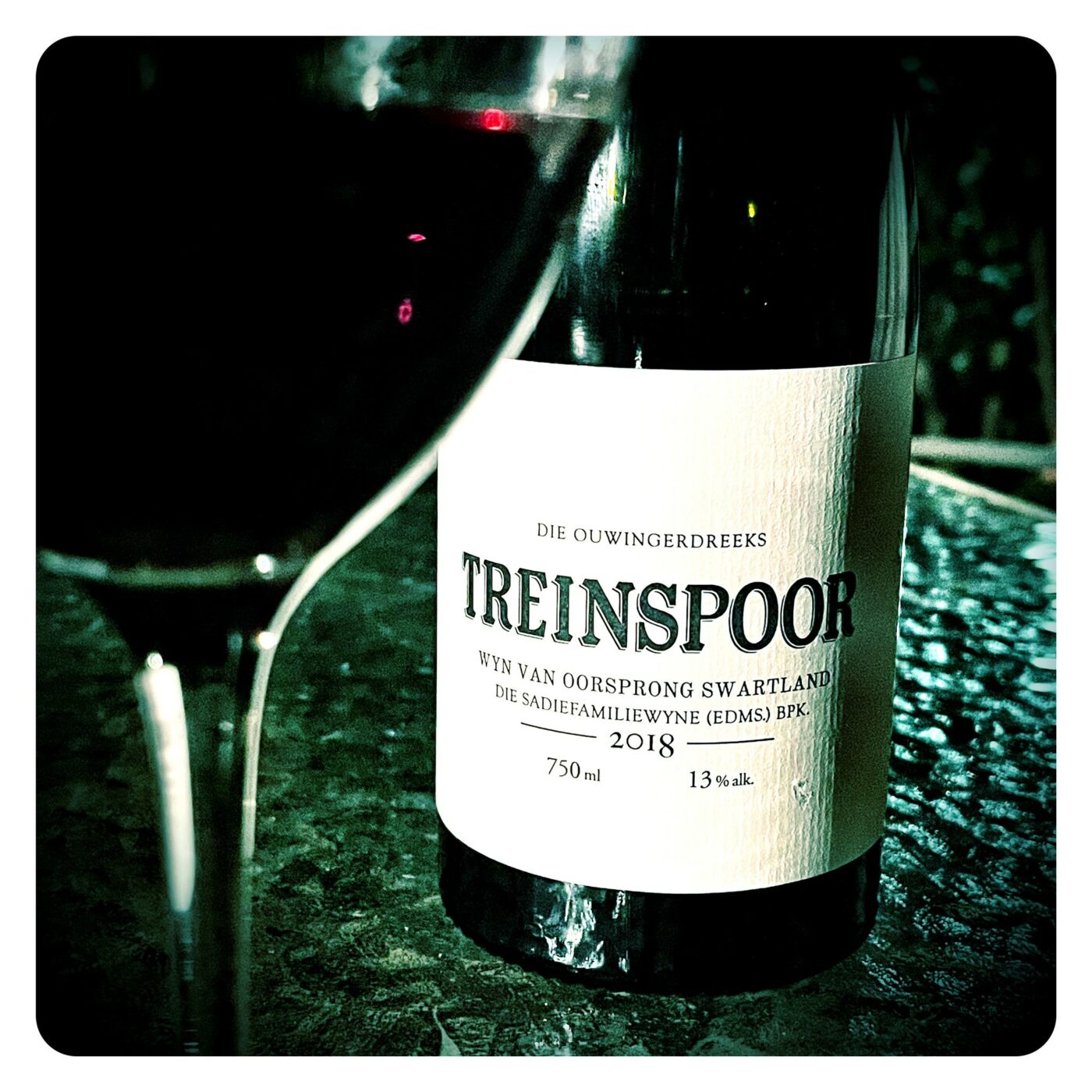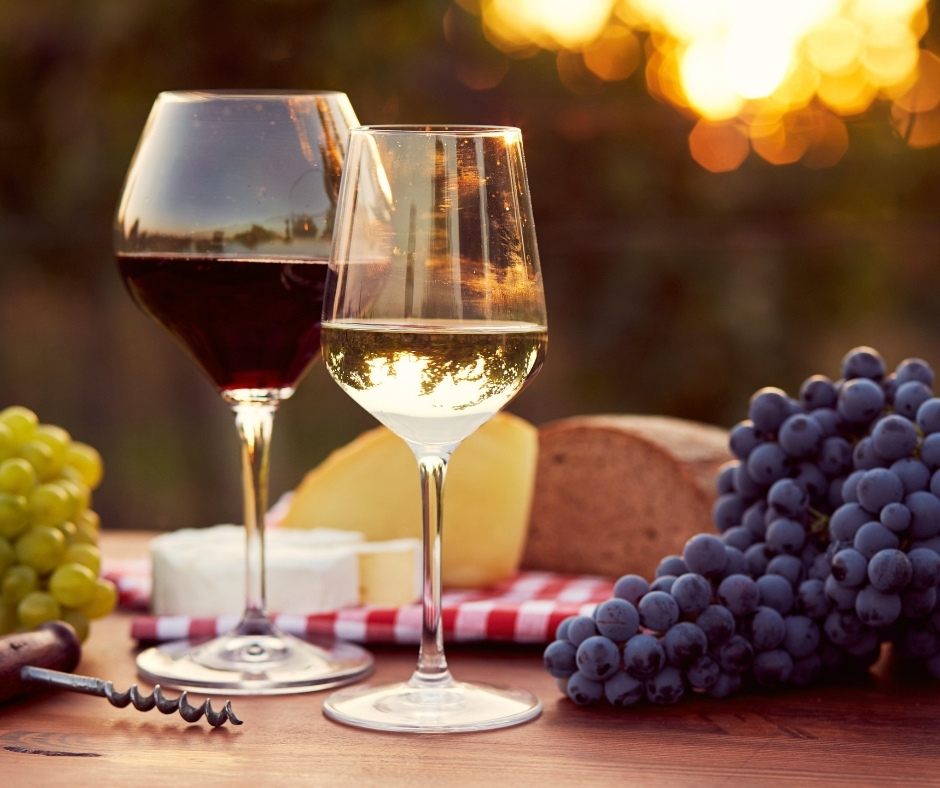Forget football, lockdowns or the economy: if there’s one question that can spark heated debate in Australia, it’s whether you should be able to bring your own bottle of wine to restaurants. Some say BYO robs restaurants of revenue, others say it creates bums on the seats – some of whom bring in really nice bottles from their cellar.
In today’s pandemic economy, however, does this unique Australian tradition have a future?
Anna Pavoni, co-owner of Chiosco by Ormeggio in Sydney’s well-heeled Mosman, says her venue’s BYO is going nowhere. Premium estates and crus are what customers normally bring to Chiosco, with plenty of French champagne.
Residents of Chiosco by Ormeggio in Sydney love to make the most of the venue’s BYO with a $15 corkage fee. Photo: Will Horner
“It makes the place so welcoming and so easy to visit. That’s really where we see the benefits and the successes of having BYO,” she says, adding that Chiosco is basically a neighborhood restaurant.
In Italy, where Chiosco chef Alessandro Pavoni is from, BYO is non-existent. “But now he’s a convert,” says Anna.
“It’s very Italian to have a fantastic local trattoria, a place you visit every day. It was really at the heart of it all. A really uniquely Australian part of your great local restaurant is having that BYO option .”

Ladro owner Sean Kierce (right) with Ricky Frisby enjoying BYO Mondays at the restaurant. Photo: Eddie Jim
Officially beginning in the mid-1960s, allowing diners to bring their own wine was a way for restaurants to circumvent restrictive and costly liquor licenses in many states. Today’s BYO is a different beast than many diners remember with negligible corkage fees and no restaurant wine list to speak of.
Many sites are reducing or removing BYO. France-Soir, a popular South Yarra destination for wine lovers and their bottles of Burgundy, has reduced the number of times you can BYO. Outside of these hours, the epic wine list is at your disposal.
In Sydney, Tetsuya’s premium $30 corkage BYO is a thing of the past, although it ended in 2019 due to margins and the way punters were using it.
Casual Melbourne pizzeria Ladro has moved from offering BYO nightly before COVID to a special Monday-only charity night. The corkage fee is only $5 and this fee is donated to organizations such as Prahran Mission and StreetSmart.
Very early in the pandemic, owner Sean Kierce halted all BYO for hygiene reasons. Later in 2020, it was about recovering lost revenue. But he says Monday night BYO for charity is an important part of the restaurant’s values, so it’s back.
Wine judge, writer and educator Philip Rich says consistently busy venues don’t need to bother with BYO, but new venues can use it to build goodwill and loyalty. He can think of at least two new restaurants in Melbourne that he visits frequently because he can bring his own wine and drink it in quality glasses.

Many BYO fans like to bring special bottles to drink with dishes they can’t make at home, such as caviar with blinis at France-Soir. Photo: Joe Armao
Al Dente at Carlton North is one of them, charging $20 a bottle. Manager Michelle Badek says she appreciates customers asking before bringing a bottle, but loves that her staff can discover rare wines like a $900 Barolo. Often guests bringing these heavy hitters will share tasters with the staff.
“It’s really nice to have this dynamic of sharing and providing this space for our customers and our staff.”
Pairing great cava choices with your favorite dish is what Rich loves about BYO.

The Al Dente Enoteca team, including Michelle Badek (left), like to see what guests bring.
“It’s a great opportunity for wine people to come together and drink great wines in each other’s company with great food.”
It also creates goodwill, he adds, pointing out that many customers buying bottles spend on other items.
Anna Pavoni agrees. “People think: I brought a bottle of wine, I’m going to splurge and have a cocktail to start and a limoncello to finish.”

Restaurateur Anna Pavoni, of Chiosco by Ormeggio in Mosman, believes that BYO is a key part of a neighborhood restaurant. Photo: Edwina Pickles
But English chef-restaurateur Simon Sandall, of Boronia Kitchen, says the numbers don’t sit well with him. His restaurant in Gladesville, on Sydney’s North Shore, is in BYO’s prime territory, but instead focuses on building a good winery and training staff in wine knowledge and service. These services do not pay for themselves.
“It’s a part of the business, but it obviously helps us generate a margin that allows us to keep the doors open,” says Sandall.
“Throughout my career I’ve been keen to say yes, if we can do it then yes. But that’s probably the only thing I’ll say no to. It just doesn’t make sense on the business plan.”

Ladro Pizza is doing a night of BYO and donating caps to charity. Photo: Supplied
Cost concerns are real right now, in everything from red meat to napkins to shipping imported goods.
Scopri, the wine-lovers’ haunt in Melbourne’s north-central, recently considered scrapping its weekend BYO to cover weekend staff costs. But after discussing the idea with customers, owner Anthony Scutella decided to raise the corkage fee. “Most of our customers don’t care what we charge, as long as we’re happy they bring our wines.
“We get to see some of the most amazing wines: Romanée-Conti, Chateau Margaux, top-shelf Barolos.”

Scopri in Melbourne provides a high quality wine service, including the decanting of old wine bottles. Photo: Gary Medlicott
Besides the cost of well-trained staff to open, pour and maybe even decant these special bottles, all BYO locations must supply and wash glasses, replace broken ones, etc.
Ladro’s Sean Kierce agrees that restaurants need to cover their costs, especially after the past two years. He plans to bring BYO back on the other nights Ladro trades, but he’ll wait to see what the next few months have in store for him.
“I would be sad if it died out… But people have to understand that if you bring your own wine you have to be prepared to pay for it.”

France-Soir in South Yarra has slightly reduced its BYO policy. Photo: Eddie Jim
Scutella says BYO has been integrated into the business model of Scopri, which opened 12 years ago.
Rich also thinks BYO still has a place. “Maybe the days of BYO-only restaurants are over. But I think having both makes sense.”
Although you might have to pay more for the privilege, it seems like, for now, BYO is here to stay.

Chef Simon Sandall and Susan Sullivan at Boronia Kitchen. Photo: Supplied
Sydney’s Best BYO Restaurants
Chiosco by Ormeggio
If Ormeggio is the neat older brother, Chiosco is the relaxed younger brother, the barefoot one making a summery caprese salad. And while he has a great taste for wine, he also lets you bring your own. Keep it casual or do as the locals do and get the boat out. Corkage fee: $15 per bottle. The Pier, Albora Marina, Spit Road, Mosman
Sung by Mabasa

Diners arrive in Chiosco with their own choice. Photo: Supplied
There’s a sharp drink list (think Kloud beer or Hallasan soju), but why not bring something fresh to go with you from a set menu that could include stir-fried pees in gochujang and spicy fried chicken and sweet? Corkage fee: $10 per person. 98 Fitzroy Street, Surry Hills
Sean’s
BYO expands the reach of those long lunches overlooking Bondi. Have you had something in the cellar for a while? Drink it here. Corkage fee: $25 per bottle. 270 Campbell Parade, North Bondi
Yakitori Jin
Bring whatever you fancy pairing with hits from the robata, be it tsukune, okra, leg skewers or wagyu tri tip. Corkage fee: $4.50 per person. 101 Ramsay Street, Haberfield
Emma’s snack
Pop past nearby P&V liquor stores and buy something skinny to up the ante with lamb-studded hummus, crunchy pickles and more. Corkage fee: $5 per person. 59 Liberty Street, Enmore
Melbourne’s Best BYO Restaurants
Ladro
With a small corkage fee that goes straight to charity, Ladro’s Monday night BYO sounds like an invitation to rally the troops for an Italian feast earlier this week. Corkage fee: $5 per bottle. 224 Gertrude Street, Fitzroy; 162 Greville Street, Prahran
Osha
In addition to sophisticated Japanese fare — think pristine sushi and sashimi, and heartier entrees such as konbu beef or black cod with miso — chef and owner Yasu Yoshida allows diners to drink BYO wine for reservations at the restaurant. lunchtime and Wednesday evening. Corkage fee: $15 per person. 3 Church Street, Hawthorn
Pacific Seafood BBQ House
Head to the flock of golden-breasted Peking ducks you’ll see hanging by their necks from the front window, grab a table among the live seafood tanks and dive in – with a bottle of something good, of course. . Corkage: $6 per bottle (South Yarra); $3 per person (Richmond). Shop 1, 210 Toorak Road, South Yarra; 8/240 Victoria Street, Richmond.
Scopri
Expect traditional antipasti, primi, secondi and dolce from Italy’s 20 regions, showcasing biodynamic produce from the restaurant’s Macedon Ranges farm. And, if you wish, something from your own cellar (or one of their 300 bottles). Corkage fee: $25 per bottle on weekdays, $30 on weekends.191 Nicholson Street, Carlton.
Jim’s Greek Tavern
BYO’s laid-back policy adds to the charm of this Collingwood tavern. They’ll bring home-made dips, savory fried saganaki, and grilled meat platters, and you’ll bring whatever you want to drink in any quantity. 32 Johnston Street, Collingwood
with David Matthews and Anna Webster
 Fredericksburg, Texas would be worth a visit just to take in the natural beauty of the Texas Hill Country in the spring and soak up its German heritage. But the main draw of the city, about 70 miles from Austin or San Antonio, is its reputation as the epicenter of the Texas wine scene. With […]]]>
Fredericksburg, Texas would be worth a visit just to take in the natural beauty of the Texas Hill Country in the spring and soak up its German heritage. But the main draw of the city, about 70 miles from Austin or San Antonio, is its reputation as the epicenter of the Texas wine scene. With […]]]> If you’ve ever wondered how terroir impacts what you taste in your glass, shinrin yoku can offer some understanding. More commonly known in the United States as forest baths, these meditative, guided walks date back to the 1980s, when Japanese doctors sent their overworked patients to local forests to reconnect with nature. Studies have found […]]]>
If you’ve ever wondered how terroir impacts what you taste in your glass, shinrin yoku can offer some understanding. More commonly known in the United States as forest baths, these meditative, guided walks date back to the 1980s, when Japanese doctors sent their overworked patients to local forests to reconnect with nature. Studies have found […]]]>



 When we think of high-quality wine produced in the United States, we think first of California. However, Arizona vineyards are gaining in prestige and more and more wineries continue to enter the market, producing unique, high quality wine. The warm climate and high altitude provide a good environment for growing grapes. With low temperatures in […]]]>
When we think of high-quality wine produced in the United States, we think first of California. However, Arizona vineyards are gaining in prestige and more and more wineries continue to enter the market, producing unique, high quality wine. The warm climate and high altitude provide a good environment for growing grapes. With low temperatures in […]]]>




 The program offers courses and certifications for wine beginners, connoisseurs and service professionals – The Wine and Spirits Education Trust (WSET) program in Paso Robles, which has already helped hundreds of Paso Robles wine industry professionals earn their certifications, returns with in-person classes this spring at Broken Earth Winery, including the WSET Level 3 award […]]]>
The program offers courses and certifications for wine beginners, connoisseurs and service professionals – The Wine and Spirits Education Trust (WSET) program in Paso Robles, which has already helped hundreds of Paso Robles wine industry professionals earn their certifications, returns with in-person classes this spring at Broken Earth Winery, including the WSET Level 3 award […]]]>

 Where to buy in South Africa? After almost exactly two years, this week I finally returned to South Africa to visit both wine producers and suppliers in the Cape Winelands and upcountry in Johannesburg and Pretoria. No matter what international commentators and wine critics say, it is simply not possible to truly keep your finger […]]]>
Where to buy in South Africa? After almost exactly two years, this week I finally returned to South Africa to visit both wine producers and suppliers in the Cape Winelands and upcountry in Johannesburg and Pretoria. No matter what international commentators and wine critics say, it is simply not possible to truly keep your finger […]]]> The scientists who developed the Nutri-Score AE health food labeling system in France call for all alcoholic beverages to be labeled “F”. This in addition to showing its sugar and calorie content, said nutritionist Professor Serge Hercberg, one of the diet’s founders. The idea predictably infuriated the wine industry, including in Italy. The EU would […]]]>
The scientists who developed the Nutri-Score AE health food labeling system in France call for all alcoholic beverages to be labeled “F”. This in addition to showing its sugar and calorie content, said nutritionist Professor Serge Hercberg, one of the diet’s founders. The idea predictably infuriated the wine industry, including in Italy. The EU would […]]]> Forget football, lockdowns or the economy: if there’s one question that can spark heated debate in Australia, it’s whether you should be able to bring your own bottle of wine to restaurants. Some say BYO robs restaurants of revenue, others say it creates bums on the seats – some of whom bring in really nice […]]]>
Forget football, lockdowns or the economy: if there’s one question that can spark heated debate in Australia, it’s whether you should be able to bring your own bottle of wine to restaurants. Some say BYO robs restaurants of revenue, others say it creates bums on the seats – some of whom bring in really nice […]]]> Cuvée Morgon: wine for laying down. Cru Morgon: wine for laying down. (Photo by Pascale BEROUJON/Gamma-Rapho via … [+] Getty Images) Gamma-Rapho via Getty Images The mystique of famous Burgundy wines from the Côte d’Ôr and Côte de Nuit like those of Domaine Romanée Conti, which can easily sell for $1,000 a bottle, has sadly […]]]>
Cuvée Morgon: wine for laying down. Cru Morgon: wine for laying down. (Photo by Pascale BEROUJON/Gamma-Rapho via … [+] Getty Images) Gamma-Rapho via Getty Images The mystique of famous Burgundy wines from the Côte d’Ôr and Côte de Nuit like those of Domaine Romanée Conti, which can easily sell for $1,000 a bottle, has sadly […]]]> Sometimes it’s good to keep it simple. Whether it’s a midweek Wednesday or a thirsty Thursday, you don’t always want a wine with the wow factor. Just a nice drink to set the tone and relax – what wine lovers like to call “support group wine”. Not the best displays, but mood boosters to draw […]]]>
Sometimes it’s good to keep it simple. Whether it’s a midweek Wednesday or a thirsty Thursday, you don’t always want a wine with the wow factor. Just a nice drink to set the tone and relax – what wine lovers like to call “support group wine”. Not the best displays, but mood boosters to draw […]]]> Whether you prefer a glass of translucent Irsai Olivér or a deep ruby Egri Bikavér is a matter of personal taste. However, when it comes to the question of which is healthier, we probably couldn’t give a quick and straightforward answer. Do you wonder that in the battle of red wine against white wine, which […]]]>
Whether you prefer a glass of translucent Irsai Olivér or a deep ruby Egri Bikavér is a matter of personal taste. However, when it comes to the question of which is healthier, we probably couldn’t give a quick and straightforward answer. Do you wonder that in the battle of red wine against white wine, which […]]]>